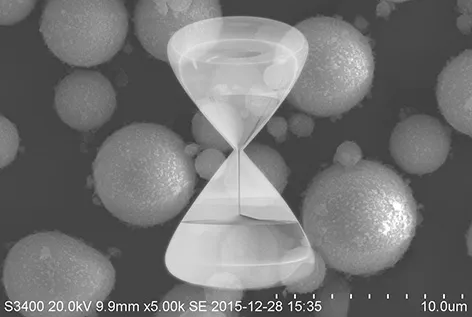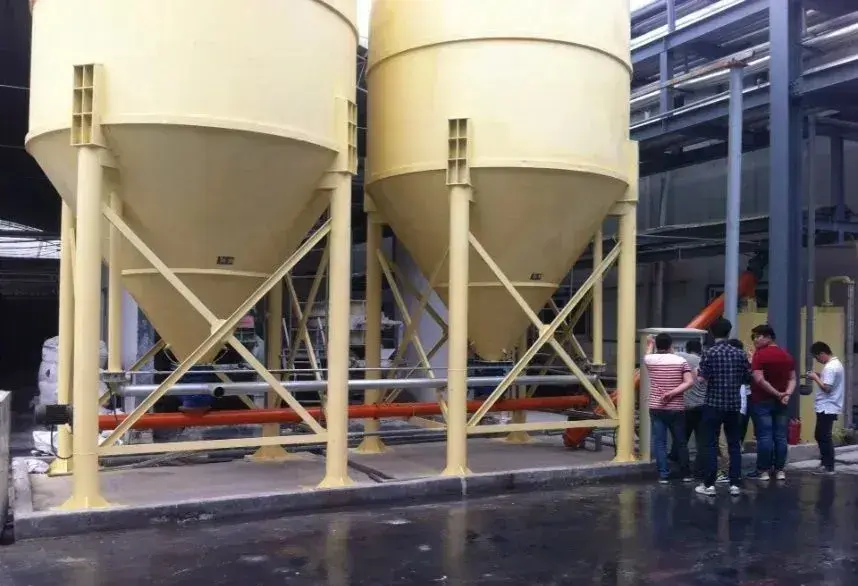Calcium carbonate surface modification is a crucial processing technology to improve its application performance, versatility, and market expansion. Currently, there are five main methods: inorganic surface treatment, organic surface modification, polymer surface modification, mechanical-chemical modification, and high-energy surface modification. The modification effects are mainly reflected in the following aspects:
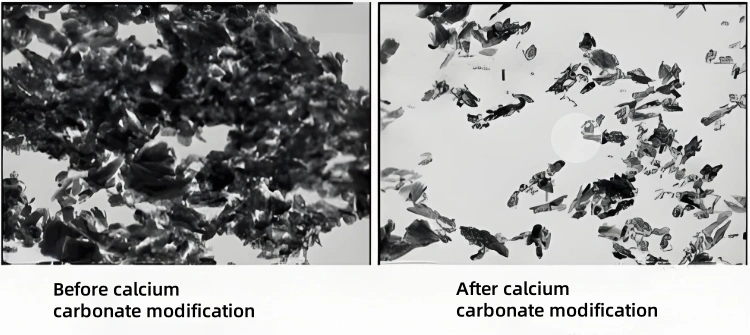
Improve the dispersibility of calcium carbonate
Ultrafine processing is an important way to improve calcium carbonate quality. However, the smaller the particle size of calcium carbonate, the higher the surface energy, stronger adsorption, and more severe agglomeration.
Selecting appropriate surface treatment agents and activation methods can improve product dispersion and prevent secondary aggregation.
Otherwise, if particles agglomerate, the actual particle size of the calcium carbonate product will be much larger than the original particles.
In plastic processing, with limited mixing shear force, it is difficult to break the agglomerates, leading to local defects. In this case, the application effect may be worse than that of ordinary active calcium carbonate.
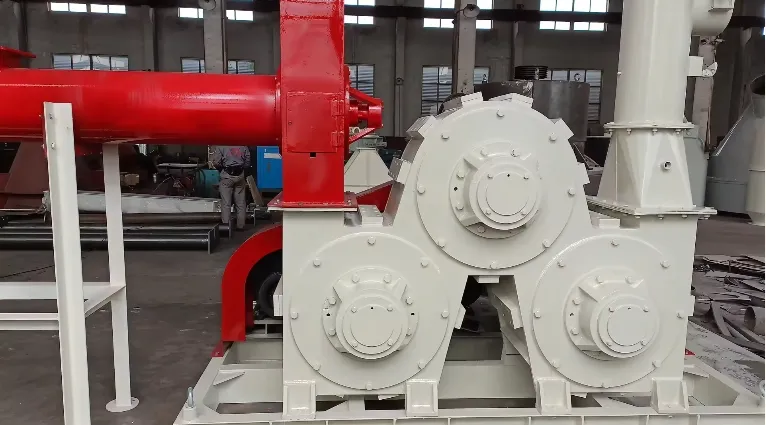
Improved calcium carbonate compatibility
Through surface modification of calcium carbonate, its interface compatibility and affinity with organic materials can be enhanced, thereby improving its product performance in composites such as rubber or plastics.
When using stearic acid and coupling agents for surface treatment of nanocalcium carbonate, this type of activation improves powder compatibility in polymers. However, it does not fully address dispersion in rubber during the vulcanization process. Strong mechanical action is still needed for effective dispersion. New surface treatment agents and dispersants for nanocalcium carbonate should be synthesized based on polymer science principles.
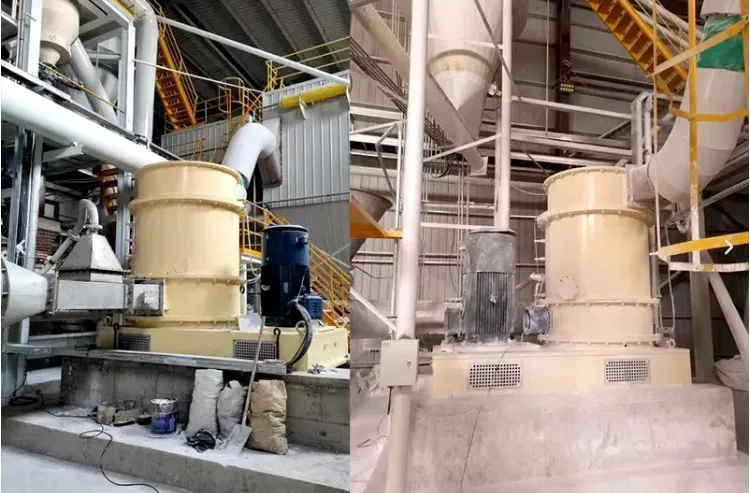
Imparting functionality to calcium carbonate
Through surface modification, calcium carbonate can transform from a simple filler to a multifunctional modifier, such as:
- In plastics, it can improve the dimensional stability, hardness, and rigidity of plastic products, as well as enhance processing performance and heat resistance.
- As a filler in rubber, it increases volume, reduces costs, and improves processing and vulcanization performance.
- In papermaking, it serves as a filler for paper, white pigment for coated paper, and filler for calcium-plastic paper.
- In coatings, it acts as a filler providing a framework structure, hence called “extender pigment.” In oil-based coatings, the filling amount can reach 10–50%, while in water-based coatings, it can reach 10–20%.
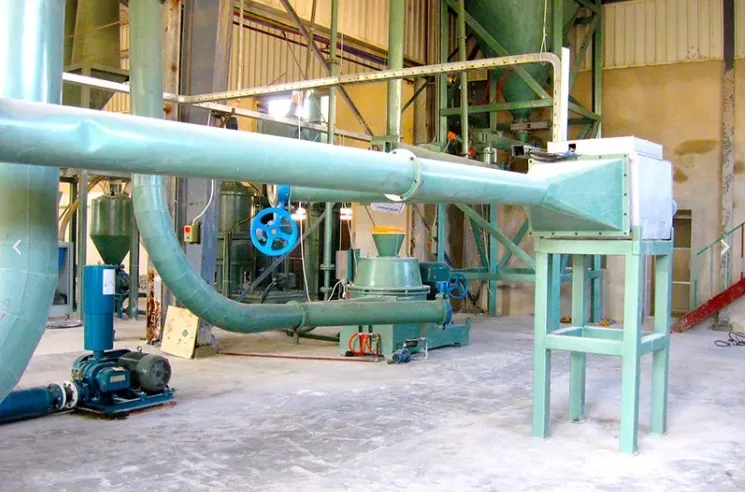
Reduce the oil absorption value of calcium carbonate
The lower the oil absorption value, the better. If the oil absorption value is too high, it can cause excessive absorption of plasticizers during mixing, increasing system viscosity and affecting resin processing. This also raises the amount of plasticizer required, thus increasing product costs. Therefore, reducing the oil absorption value is key to improving its application performance. Currently, calcium carbonate products with low oil absorption values have a clear market advantage. Surface modification is an important method to reduce the oil absorption value of powders. After surface modification, the polarity of calcium carbonate is reduced, friction between particles decreases, and lubricity improves. As a result, the particles pack more tightly, increasing bulk density and reducing oil absorption value.
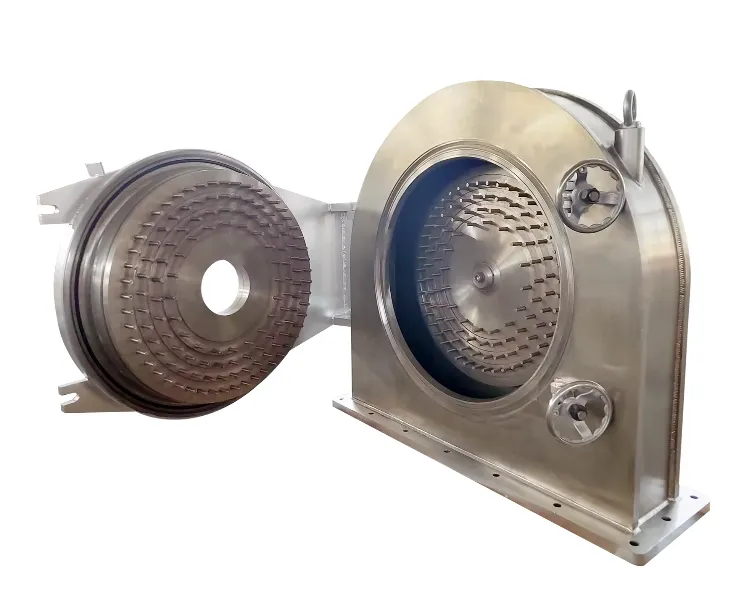
Increase the added value of calcium carbonate
Currently, there is an oversupply of ordinary calcium carbonate, and low-price competition is intense. Calcium carbonate modified by surface treatment shows significantly improved performance, providing a better user experience, which naturally increases its value. Of course, the price increase after modification varies depending on the particle size of the calcium carbonate.
Types of Nano Calcium Carbonate Modifiers
The modification methods for nano-calcium carbonate usually involve grafting and coupling reactions. Depending on the structure and characteristics, the modifiers can be classified into surfactants, coupling agents, polymers, and inorganic substances.
Surfactants
Currently, commonly used surfactants include fatty acids, phosphates, and polymers.
Fatty acid modifiers have a long-chain alkyl structure at one end of the molecule, similar to polymers. According to the principle of similarity, they can better compatibilize with polymer matrices. The polar groups, such as carboxyl groups, at the other end of the molecule can physically or chemically adsorb on the surface of inorganic materials like nano-calcium carbonate.
Phosphates mainly modify nano-calcium carbonate by reacting phosphate ions with calcium ions to form a phosphate layer on the surface, improving the surface’s oil affinity and hydrophobic properties.
Polymers modify by controlling the particle size of nanoparticles and altering their surface state. Polymers containing sulfonic or carboxylic groups can serve as modifiers and are typically used in ionizable group forms.
Coupling agent
Coupling agents modify by using two different functional groups in the molecule to either chemically react or physically intertwine with the functional groups on the surface of calcium carbonate, thus combining two materials with distinct properties. This forms a molecular bridge on the surface of nano-calcium carbonate, enhancing its compatibility with organic materials.
Titanate and aluminate coupling agents are currently the most commonly used types of coupling agents for modifying nano-calcium carbonate.
Polymers and Inorganics
Polymers modify by adsorbing onto the surface of calcium carbonate, forming a physical or chemical adsorption layer. This layer imparts charge characteristics, preventing agglomeration and improving dispersion.
Inorganic electrolytes, as modifiers, adsorb onto the surface of nano-calcium carbonate.
They significantly increase the absolute value of the surface potential of nano-calcium carbonate. At the same time, the wettability of the nano-calcium carbonate surface with water is enhanced, which partly prevents aggregation in water.
Common inorganic electrolyte modifiers include sodium aluminate, sodium silicate, alum, and condensed phosphates.
conclusion
Modified calcium carbonate powder, as an industry with high technological content and added value, has achieved significant results in multiple fields. It not only transforms abundant inorganic non-metallic mineral resources into economic advantages but also enhances the quality and competitiveness of products in related industries.
When developing functional calcium carbonate fillers, we should focus on their cost effectiveness, reducing plastic raw material costs. At the same time, we should explore their functionality and environmental benefits in products, shifting from profit pursuit to a new realm of sustainable development.
epic powder
Epic Powder, 20+ years of work experience in the ultrafine powder industry. Actively promote the future development of ultra-fine powder, focusing on crushing,grinding,classifying and modification process of ultra-fine powder. Contact us for a free consultation and customized solutions! Our expert team is dedicated to providing high-quality products and services to maximize the value of your powder processing. Epic Powder—Your Trusted Powder Processing Expert !
